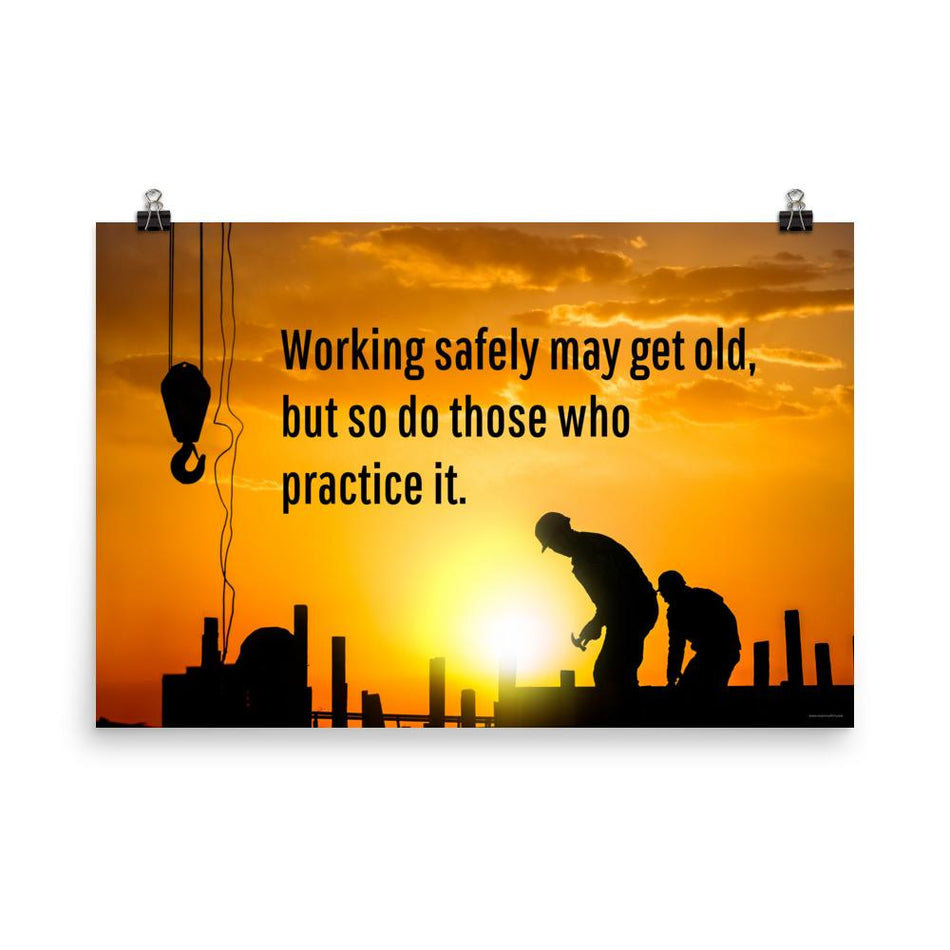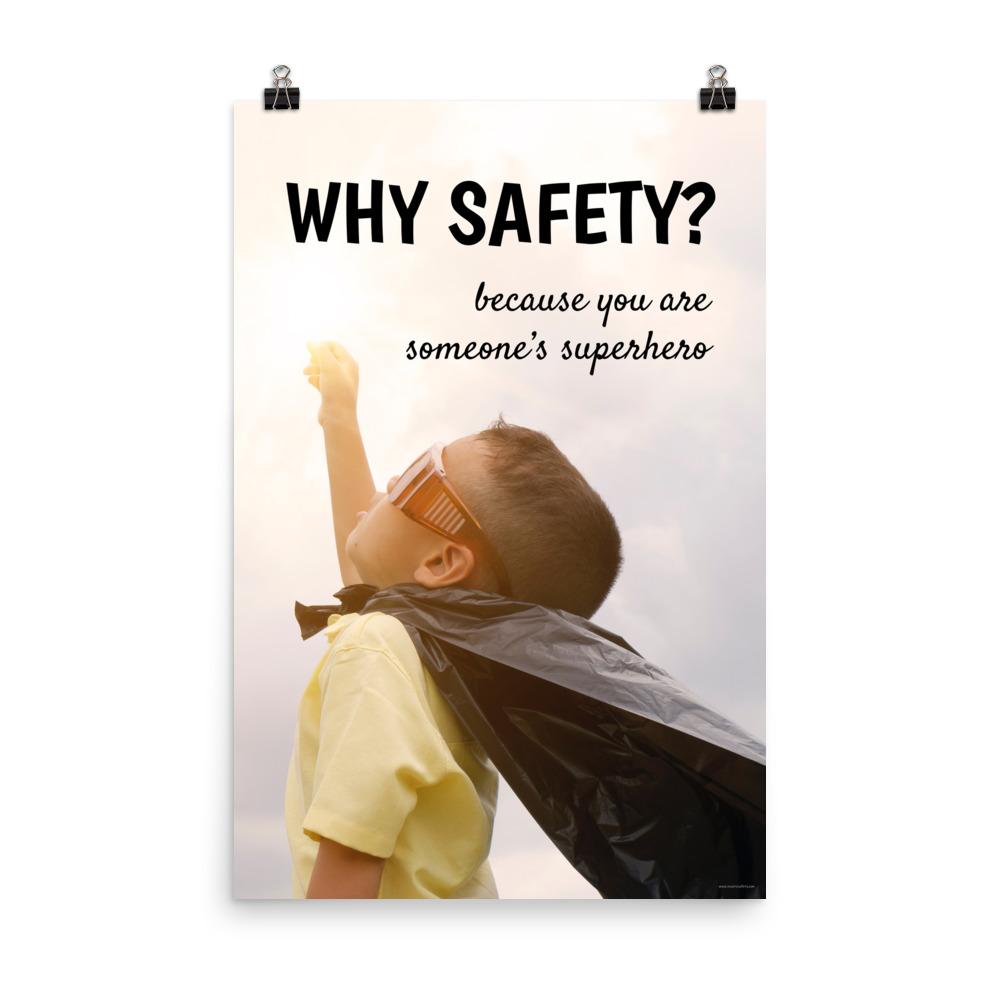The start of a new year is an excellent time to review your workplace safety and health program and set goals based on your current and anticipated resources. However, this evaluation shouldn't be limited to just the beginning of the year!
Ideal times to review, assess, and set new goals for your workplace safety and health program include:
- Changes in your safety budget
- Addition of a new line of business
- Acquisition of new equipment
- Updates to Federal OSHA, State, or Local requirements that affect your business
- An influx of new employees
- Expansion of the safety department with new resources and staff
- When safety improvements are needed or desired
The goals for any workplace safety and health program will vary greatly from business to business. Here are 20 excellent goals to consider that go beyond simply stating, "We need to strengthen our safety culture this year."
1. Address OSHA's Top 10 Violations
Every year, OSHA publishes the most frequently cited violations, making it an excellent starting point for enhancing your safety program. Begin by asking, “Are any of these hazards present in my workplace?”
2. Organize a Safety Stand-Down
A safety stand-down is a voluntary event where employers talk directly to employees about safety. You can organize one specifically for your company or participate in a national event like the National Safety Stand-Down to Prevent Falls.
3. Recognize and Reward Safe Behavior
Positive reinforcement is crucial for ensuring workplace safety. OSHA advises against using incentive programs that penalize workers for reporting incidents. Instead, implement a program that rewards employees for participating in safety activities, such as hazard reporting.
4. Attend a Safety Conference
Safety professionals often feel isolated, but attending a safety-focused conference can rejuvenate their commitment to safety. Aim to attend at least one safety conference this year.
5. Provide Engaging Training Opportunities
Revamp your training programs if they have become stagnant. Incorporate interaction, humor, and engagement to make training sessions more effective and enjoyable for employees.
6. Gather Feedback on the Safety Program
Create a survey with thoughtful questions to collect feedback from employees about the current safety program. Employees are more likely to engage with a program they helped to improve.
7. Conduct a PPE Inspection
Perform a comprehensive PPE inspection for all employees, teams, and vehicles. Repair or replace any equipment that does not meet safety standards.
8. Create a Safety Metrics Dashboard
Set up a safety dashboard displaying the top 1-5 safety metrics. Place it in a prominent location and update it regularly so employees can track their progress.
9. Start a Safety Meeting Program
Regular safety meetings can significantly enhance workplace safety, boost team morale, lower insurance premiums, and strengthen compliance. These meetings help ensure your company meets and exceeds OSHA standards.
10. Offer First Aid, CPR, and AED Training
First Aid and CPR training are crucial for all employees, not just those in the field. Offer these classes regularly and allow all employees to become certified.
11. Participate in a Safety Campaign
Engage in safety awareness campaigns like Safe + Sound Week, CPR & AED Awareness Week, Drive Safely Work Week, and National Safety Month. Choose at least one relevant campaign and fully commit to it for educational and focused safety efforts.
12. Provide Flu Shots
Launch a flu prevention campaign and offer low-cost or free flu shots to all employees. Prevention is key to maintaining a healthy workforce.
13. Implement a Hazard Reporting System
Develop a system for employees to report safety hazards. Once hazards are identified, address and eliminate them to create a safer workplace. This could be as simple as a dedicated safety hazard email address.
14. Eliminate the Top Injury Hazard
Identify and eliminate the primary injury hazard in your business or industry. Addressing this issue can save your company significant costs and improve overall safety.
15. Add AEDs to the Workplace
Install AEDs, provide training, and ensure a maintenance system is in place. If your business shares space, encourage the property owner to place AEDs in common areas as well.
16. Implement a Safety Audit Program
A safety audit evaluates your safety programs and practices, identifying areas for improvement. Reviewing safety goals during the audit can be particularly beneficial.
17. Add First Aid Kits to Vehicles
Ensure all company vehicles are equipped with first aid kits and maintain a program to keep them stocked. Consider adding seasonal kits for cold or hot weather if applicable.
18. Conduct Incident Investigations
Enhance your incident investigation procedures to not only address the cause of incidents but also implement preventive measures to avoid future occurrences.
19. Design Checklist Inspections
Use checklists for equipment and process inspections, such as ladders, forklifts, and LOTO procedures. This engages workers in the safety program and helps maintain compliance.
20. Update the Emergency Action Plan
Ensure your Emergency Action Plan is current and all employees are trained on it. Effective plans outline procedures during emergencies to protect workers and minimize property damage.
By setting and achieving these goals, you not only comply with safety regulations but also create a workplace where employees feel valued and protected. A strong safety culture leads to higher morale, increased productivity, and reduced costs, ultimately benefiting both employees and the organization. Use this guide to inspire and drive your safety initiatives forward, creating a safer and more efficient workplace for everyone.












